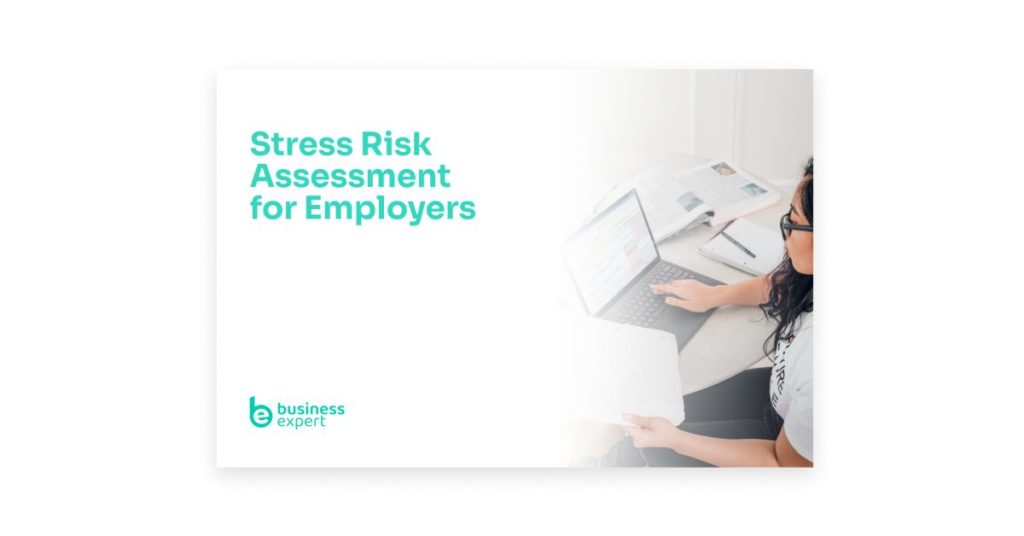We take a look at the steps that you can take in your business to reduce work-related stress and help your employees live healthy, rewarding, and productive lives.
Work-related stress and finding the right work-life balance are intrinsically linked. When people work longer, spend more time commuting and do not see enough of their families or pursue the interests and hobbies that they love, stress levels rise. That’s why getting the relationship between your employees’ working and personal lives is such an important balance to strike.
With that in mind, we’re going to take a look at the steps that you can take in your business to reduce work-related stress and help your employees live healthy, rewarding, and productive lives.
Why is Work-Life Balance so Important?
According to the Mental Health Foundation:
“The pressure of an increasingly demanding work culture in the UK is perhaps the biggest and most pressing challenge to the mental health of the general population.”
The cumulative effect of increased working hours and longer commutes is having a profound impact on levels of mental wellbeing and stress. According to the Health and Safety Executive, a staggering 17.9 million working days per year are already lost to stress, anxiety, and depression, but the human cost of unmanaged work-related stress is far greater.
As a business, if you ignore the work-life balance of your employees, then their output and the quality of their work will suffer. For example, one study found that a failure to achieve a work-life balance leads to lower productivity at work and higher rates of stress and absenteeism. Another study found that poor balance is a leading cause of job dissatisfaction.
Clearly, the idea that employees who work longer hours are more productive is outdated. Instead, you should be looking for ways to make employees more efficient and productive when they are at work and giving them the flexibility to manage their workload in a way that suits them.
The Impact of an Unhealthy Work-Life Balance
When an employee feels that they are spending too much of their time in one area of their life at the expense of another, it leads to feelings of guilt and frustration. That can have a damaging impact on their personal relationships and self-esteem. It’s also well-known that working long hours can increase levels of stress and anxiety, which can have serious mental and physical health consequences for employees.
A survey by the Mental Health Foundation found that:
- One-third of employees are unhappy or very unhappy about the amount of time they spend at work;
- Nearly half of employees neglect other aspects of their lives due to work;
- 27% of employees feel depressed, 34% feel anxious and 58% are irritable when working long hours;
- The longer employees work, the more time they spend outside of work thinking about it;
- As working hours rise, so do feelings of unhappiness;
- Nearly two-thirds of employees have experienced a negative effect on their personal lives, including poor relationships, poor home life and physical and mental health problems, as a result of working long hours.
The Benefits of Achieving a Healthy Work-Life Balance
One of the keys to protecting your employees from the effects of work-related stress is to take steps to improve their work-life balance. In growing businesses with demanding clients and deadlines, that can be difficult, but ultimately, the benefits for your people and your business are worth it.
- Greater engagement
Research has shown that there is a direct relationship between employee engagement and work-life balance. One study found that the more satisfied employees are with their work-life balance, the more engaged they are likely to be at work.
Another survey of 50,000 global workers by the Corporate Executive Board, which represents 80% of the Fortune 500 Companies, found that employees who believe they have a good work-life balance work 21% harder than those who don’t.
- Reduced absenteeism
Numerous studies have also linked a poor work-life balance to increased absenteeism. One survey found that only 34% of unscheduled absences are due to personal illness. Other common reasons include missing work for family reasons (22%) and personal needs (18%). The impact of stress and the entitlement rationale – ‘I earned this leave, so I can use it anytime I want’ – also accounted for 13% of unscheduled absences each.
- Fewer burnouts
We all get stressed from time to time. For many people, it’s an unavoidable part of work. However, burnouts only occur when employees feel overwhelmed and experience stress over a prolonged period. Burnout comes with the symptoms of depression, lethargy and a loss of the ability to concentrate and think clearly, all of which hamper productivity.
With a healthy work-life balance, employees can escape the causes of stress and spend more time away from work with family and friends. That allows them to recharge and drastically reduces the risk of burnout.
How to Improve the Work-Life Balance of Your Team
These are a few of the practical steps that you can take to improve the work-life balance of your teams.
- Encourage time off
Paid leave is a necessity, not a luxury. We all need to take a break away from work to switch off, enjoy ourselves and recuperate and recharge. There are numerous studies, just like this one, which shows that an increase in holiday days taken leads to a reduction in the levels of work-related stress and burnout.
Over the last year, all sorts of businesses, both big and small, have introduced paid self-care days on top of regular paid time off to reduce work-related stress. These ‘wellness days’ can potentially kickstart a shift to new norms and more flexible working schedules.
Another simple but effective way to encourage your people to take time off is to implement a ‘use it or lose it’ system, with any unused days not carried over at the end of the year or repaid financially. However, instead of losing the holiday days entirely, workers should be actively encouraged to take them by management before they expire.
- Offer flexible and remote working
Remote working is certainly a hot topic at the moment thanks to the pandemic, and according to a study by the CIPD, it has fueled an improved quality of life for employees and a boost in productivity. Its Embedding new ways of working report found that 61% of more than 1,000 employees reported an improved work-life balance as a result of home working.
The key to implementing remote working successfully is to give employees a choice about how often they work from home and when. Studies have shown that while working from home five days a week might be the ideal solution for some workers, others would prefer to be in the office full-time. Finding a middle ground that works for everyone is possible as long as you are flexible in your approach.
Workers also value employers who give them the freedom to manage their own time. Employees want to be trusted to manage when, where and how they work. Allowing them to finish earlier to collect their children from school or see a doctor without having to worry about contacting their employer can be a very effective stress reliever.
One study found that people who believe they have flexible jobs regard their work-life balance more favourably than those with the same workload but no flexibility. The same study found that team member who perceives their jobs are flexible work for longer hours before their workload has a negative impact on them.
- Introduce short breaks throughout the day
It’s hardly surprising that sitting and staring at a screen for hours on end without access to natural light or fresh air is detrimental to our physical and mental health.
To reduce the impact, you should encourage employees to get out of the office for walking meetings and take small breaks away from their screens throughout the day. Going out with a colleague to grab an impromptu coffee or having an outdoor space where workers can relax, have a chat and get some fresh air is another great way to relieve stress.
While this kind of small change will not have an immediate impact on the work-life balance of your employees, it is the cumulative effect of several smaller changes that will start to tip the balance in the right direction.
- Promote a culture of working smarter, not longer
Forget multitasking and working long hours, the key to productivity lies in working faster and looking for more efficient ways to complete tasks. There’s a big difference between being busy and being productive. When employees are busy, they feel productive, but they’re only being productive when they’re producing results that will help to grow the business.
Training your teams to set clear goals, identify their most important work activities, and tackle their biggest priorities first thing each day is a simple step that you can take to help them get more done in less time.
Going into meetings with an outline of what you want to cover and keeping it as brief and productive as possible is another important step. Encouraging employees to split their days into 90-minute work periods, separated by breaks, also maximises the brain’s natural ability to focus and improves overall productivity.
- Lead by example
The culture of a business disseminates from the top down, so there’s no point preaching about the importance of a healthy work-life balance if you’re not living it yourself. Your actions should set a precedent for how you want your employees to operate, so if you’re working long hours, emailing employees in the evening, and not taking annual leave, they’re going to do the same.
- Monitor employee workloads and deadlines
If you’re serious about improving the work-life balance of your employees and reducing work-related stress, you must make sure your employees have realistic workloads and deadlines. It’s important to encourage a culture of openness about time constraints and workloads so employees feel able to speak up if the demands placed on them are too great.
You must also familiarise yourself with the process of allocating work and make sure your management team understands how long tasks realistically take. Managers must also talk to their teams about who is busy, who has the capacity, and who is feeling stressed on a regular basis.
Create a Happier Workplace for Your Team
The benefits of creating a healthier work-life balance are phenomenal, both for your business and your employees. Workers will be happier, healthier, and more productive and your company will benefit from a more engaged and loyal workforce as well as a very useful staff retention tool.
Perhaps most importantly, however, prioritising the wellness of your team will give employees the chance to recharge, destress and steer clear of the mental and physical health conditions associated with an ‘always on’ workplace culture.



